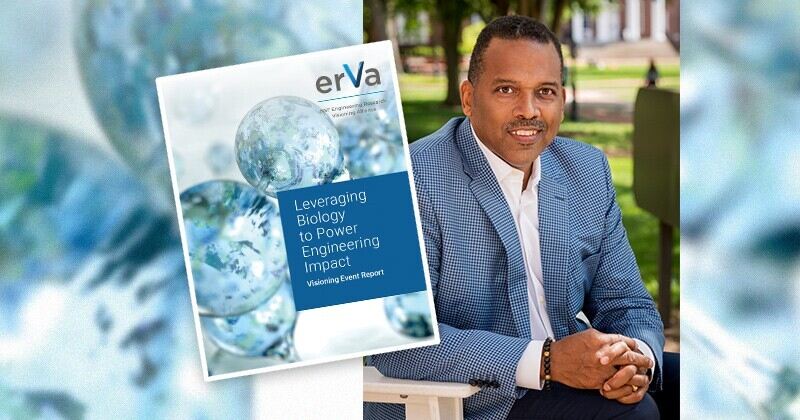UD hosts Engineering Research Visioning Alliance event to help identify priorities at the intersection of biology and engineering
From advances in genome editing with CRISPR to new robotic designs that take inspiration from the animal kingdom, innovations at the interface of engineering and biology have transformed modern life and impacted a range of fields such as health care, agriculture, and technology. But despite this rapid progress, the sheer number and complexity of challenges facing the world — from climate change to infectious diseases — require bold, new, creative strategies.
To identify fundamental research gaps and nascent opportunities, specifically in areas where engineers can take the lead, 128 experts met in March 2022 for a two-day virtual visioning event. Convened by the Engineering Research Visioning Alliance (ERVA) and co-hosted by the University of Delaware, Johns Hopkins University, the University City Science Center, and the Waters Corporation, the event was called, “Leveraging Biology to Power Engineering Impact,” and identified strategic research priorities that merge breakthroughs in biology with engineering. Details of these priorities and future research directions were recently published in a final report and executive summary.
While addressing the key question of “What are the questions that researchers working at the intersection of biology and engineering should explore to improve the human condition?”, teams of experts worked together over the course of two days to come up with solutions to eight “Impossible Things,” which included complex scenarios such as “Lifespans are no longer defined by ZIP code” and “Any-town USA manufactures all the chemicals and materials it needs from plants grown nearby.”
Dozens of engineering research priorities are outlined in the final report, which is organized around three research domains: bio-inspired/informed, repurposing biology, and improving on biology. (The gene editing tool called CRISPR is an abbreviation for “clustered regularly interspaced short palindromic repeats.”) The proposed research strategies for addressing each of the eight “Impossible Things” also provides a snapshot of an ideal future positively impacted through bold research, and subsequent innovation, at the intersection of biology and engineering.
“The University of Delaware’s College of Engineering has a long history of creative and impactful innovation,” said Levi Thompson, dean and Elizabeth Inez Professor of Chemical Engineering in UD’s College of Engineering, and the ERVA visioning event co-host. “Research-intensive universities have a special responsibility to focus on practical outcomes that make a difference for people and the environment. By assembling some of the brightest minds in engineering and science, we were able to recommend exciting paths to make the impossible possible.”
“Leveraging Biology to Power Engineering Impact” is the second report released in 2022 by ERVA, a five-year initiative funded through a cooperative agreement with the National Science Foundation to help identify future engineering research directions. To download the report or read the executive summary, visit the ERVA community’s website.
Article by Erica K. Brockmeier and Sandy Mau | Photo by Kathy F. Atkinson | Illustration by Joy Smoker (featured on UDaily, 12/16/2022)

